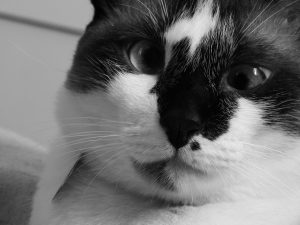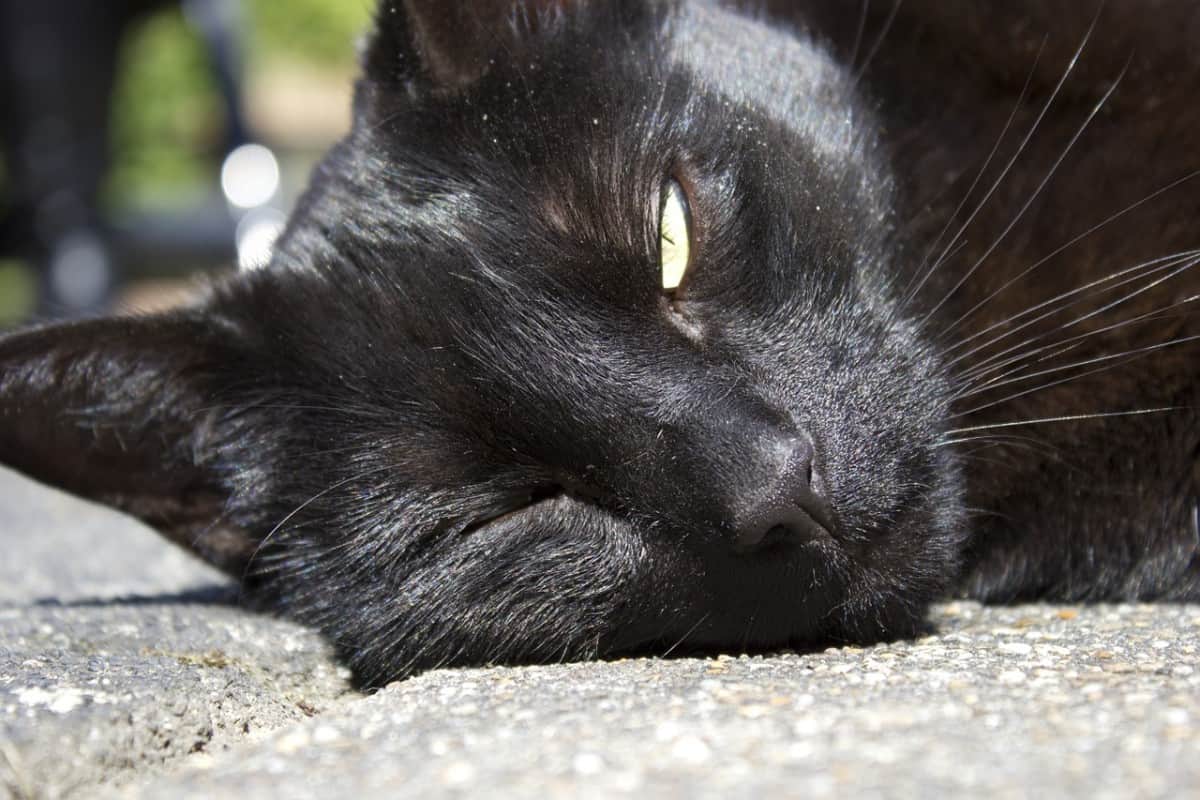Cat owners crave to understand their pet’s body language. After all, it is the only way you can be able to tell whether your cat is happy, sick or scared. Even though cats use vocalization to communicate with us, their body language will let you into his feelings. We are going to look at the feline body language as well as other communication cues.
Besides communicating with us, cats use their body language to communicate with other cats. In fact, they will use vocalization with fellow cats. You can be able to tell your cat’s mood through his tail, ears, eyes, and the overall body posture, today we are going to outline cat body language below.
[su_box title=”Understanding Feline Body Language”]Should you be in a hurry as most of us are then I am going to answer your question for you in the fastest way possible. I am going to show you a way that you can be aware of everything your feline body language and is being used by thousands of cat owners just like you. It has become so popular that is known as The cat language Bible. The benefits of interpreting feline boby language are that it can make your cat happier and more content thus, improving the relationship between you both. Just Click Here and watch a short video and pay a few dollars to download it and fully understand your cat.[/su_box]
Cat Tail Body language

Your cat’s tail will tell you what your cat is feeling. Observe the way he positions his tail and you will learn more about your cat. For instance, when he holds his tail up high, your cat is happy and confident. It means that your cat is confident and you can initiate a play session at that time.
On the other hand, when you observe your cat thumping his tail slowly, it is a sign of agitation. It is best to leave him alone. However, when you are trying to decipher what your cat’s body language means, observe the circumstances. Also, you must be able to see things from your cat’s perspective. This is because a slow flicking tail could also mean that your cat is curious about something.
When your cat is flicking his tail vigorously, he is really angry and could attack at any time. We are also going to highlight other physical communication cues to help you understand your cat better. Always look at the situation at hand before you conclude what your cat means.
Some cats carry their tails down when they are scared or feeling threatened. However, do not be too quick to conclude as some breeds will carry their tails down in normal circumstances. Before you get to conclude what your cat means with his tail down, you must learn your cat’s personality.
Your cat might also curve his tail with a question mark like curl at the top. It means that he is calm and relaxed. You can easily initiate a petting session. He might also have his tail beneath his body to indicate that he is nervous and submissive.
The Halloween cattail
A scared and aggressive cat will have a Halloween cat tail. The fluffy tail is an indication that your cat is feeling defensive and aggressive. In most cases, your cat is about to get into a fight, or you are probably annoying him. Leave him alone until he settles down.
If you are running a multi-cat home, you might observe a Halloween cat tail when two cats are fighting. You should separate them immediately.
Body posture
Cats can be quite subtle but you can be able to tell his mood through his overall body posture. While he can stretch out his body, your cat will adjust his body posture based on his mood and situation. For instance, he curls up into a ball, he is probably feeling threatened. He will do so to protect his body.
Also, he will also have his hair standing off his body. Observe the surroundings to determine if there is something causing fear or anxiety in your cat.
When your cat tries to look bigger, he is trying to intimidate the aggressor. Therefore, you may want to avoid holding or petting him when he is in this situation. Instead, get him out of the situation causing fear or anxiety immediately. It could be another pet or person making him uncomfortable.
On the other hand, when your cat is relaxed and pointing his body towards you, he is paying attention to you. At this moment, your cat is the most receptive to you. When he stretches out his body, it means that he feels safe and secure around you. Otherwise, he would not expose his body when he feels threatened. Once again, the situation and your cat’s personality will determine his mood.
Sometimes your cat will roll on his back and it is difficult to tell what he means. Usually, the ‘Venus cat trap’ is usually a defensive position, especially if he has his claws out. However, it can also be a playful gesture from your cat. Once again, based on the circumstance, you can be able to tell the difference. It is advisable not to give him belly rubs as felines may not enjoys as much as dogs do.
Cat Ear Talk

The way your cat positions his ears will also let you in on what he is feeling. We are going to discuss cat ear positioning in relation to feline body language. In normal circumstances, your cat will have his ears straight forward. It means he is content and relaxed.
However, should there be a slight movement or noise, your cat is going to be alert. His wars are going to stand straight up at attention. He is curious and trying to find out where the noise or movement is coming from. We cannot forget that cats are natural hunters and thus the curiosity and alertness.
Airplane or sideways ears indicate that a cat is feeling threatened or anxious about something. Observe your cat determine whether there is an element causing him fear or anxiety. Cat owners running multi-cat homes have at some point witnessed their cat changing their ear position out of fear or anxiety. It could also be caused by a knock on the door which will startle your cat.
Ears facing backward represent aggression in cats. Usually, a cat will not pick up a fight with you, rather with another cat or pet. For instance, if your cat turns his ears back when playing with a kid or another cat, there must be something upsetting him. Get him out of that situation and refrain from playing with him when he is in that state.
On the other hand, when your cat flattens his ears towards the back of his head, he is angry and ready to attack. This might be accompanied by a vigorously thumping tail and constricted pupils. Leave him alone until he calms down.
Feline Body language-Eye Talk
Your cat’s eyes are also the window to his moods when it comes to feline body language. Observe his pupils and you will notice a change when he changes his moods. For instance, his pupils will dilate when he is scared, stimulated or excited. It is therefore important to examine the surroundings to be able to determine why he has dilated pupils.
When he has constricted pupils, your cat is probably feeling irritable and aggressive. He will do so when he feels like he is in danger. On the other hand, your cat will blink slowly when he is calm and relaxed. It is usually called a cat kiss and you can respond by doing the same.
Sometimes your cat will want to challenge you into a staring contest. There is not much to say about a staring cat. However, it could be that your cat needs something from you. If it is accompanied by vocalization, he might be asking for something to eat. All in all, it depends on the situation at hand.
A trusting might also blink slowly or keep his eyes half-closed.
Even though cats use their body language to communicate with us, they will use vocalization more. However, when communication with other cats or animals, your cat will use his body language. Below, we are going to look at some of the verbal cues that your cat will use to communicate with you.
Verbal communication cues
Over the years, we have been able to study feline behavior. We can now understand our cats better. If you have recently brought a cat home, it is essential for you to understand feline communication and body language. Below, we are going to look at some of the most common cat vocalizations as we explore cat communication. These might include the following:
Short meow
You have probably heard your cat give you this type of meow. Your cat is probably acknowledging your presence or simply saying hello to you. Sometimes an excited cat might meow multiple times with his tail up high in the air.
Mid-pitched meow
Cat meows vary in terms of pitches, based on the urgency of their needs. A mid pitched meow is often your cat’s way to demand something. For instance, if it is already mealtime and you are late, your cat will use a mid-pitched meow to nag you. In other cases, your cat might nag you when he wants you to open a door for him.
Long-drawn out meow
Cats use this meow to insist on the urgency of their needs. For instance, if you keep ignoring his quest for some food or water, he might give you a long-drawn-out meow. It is usually followed by a mid-pitched meow.
It is more of ‘feed me now!’ kind of meow.

High pitched meow
You will rarely hear your cat giving you this meow. It is usually an indication that your cat is in pain or has been startled. For instance, if your startle your cat when he is relaxed or asleep, he will produce a high pitched meow. Always check on your cat if he is in another room and meows in a high pitch.
Low pitched cat meow
This is usually the cat meow your cat gives when he is scared or feels threatened. It is common in new kittens who have not yet settled in their new homes. Also, a lonely cat might also keep meowing in a low pitch. Check on him and spend a considerable amount of time with him to ensure that he settles in your home just fine.
Growling, hissing, and spitting
When you spot your cat hissing and spitting, your cat is really angry. It also means that he is ready to take up a fight with the aggressor. You should leave him alone completely when he is in this state. Alternatively, you can get him out of the situation leading to aggression. Do not touch him or come between him and the aggressor. In the case two cats are engaged in a fight, use a cushion to separate them.
In conclusion, different cats have different types of body language. You must study his personality to determine what some of the above discussed feline body language and other communication cues mean.
[su_box title=”Affiliate Disclosure”]This website is supported by its readers. Please assume that all links are affiliate links. If you make a purchase from one of the links we will make a commission from Amazon. Thank you.[/su_box]




